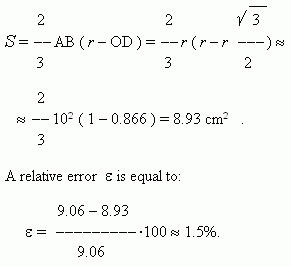Areas of plane figures
trapezoid, quadrangle, right-angled triangle, isosceles triangle,
equilateral triangle, arbitrary triangle, polygon, regular hexagon,
circle, sector, segment of a circle. Heron's formula.
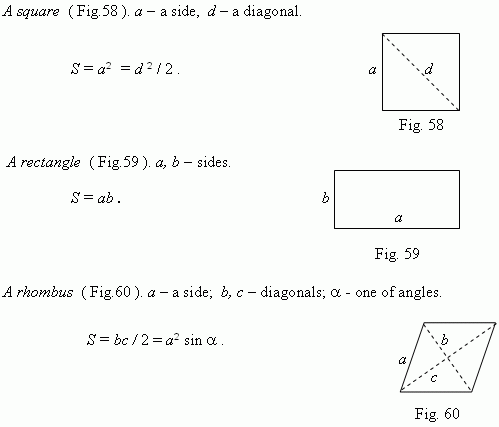
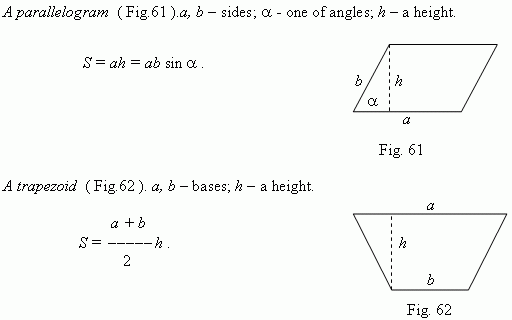
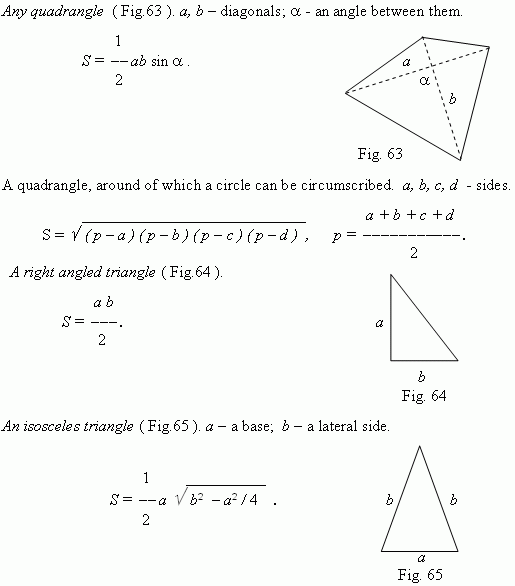

Any triangle. a, b, c –
sides;
a –
a base;
h –
a height; A, B, C – angles,
opposite to sides
a, b, c
;
p = ( a +
b + c )
/ 2.

The last expression is known as Heron's formula.
A polygon, area of which we want to determine, can be divided into some triangles by its diagonals. A polygon, circumscribed around a circle ( Fig. 67 ), can be divided by lines, going from a center of a circle to its vertices. Then we receive:

Particularly, this formula is valid for any regular polygon.
A regular hexagon. a – a side .

A circle. D – a diameter; r – a radius .
A sector
( Fig.68 )
. r
– a radius;
n
– a degree measure of a central angle;
l
– a length of an arc.
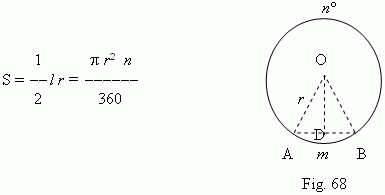
A segment ( Fig.68 ) . An area of a segment is found as a difference between areas of a sector A m BO and a triangle AOB. Besides, the approximate formula for an area of a segment is:

where a = AB ( Fig.68 ) – a base of segment; h – its height ( h = r – OD ). A relative error of this formula is equal: at A m B = 60 deg – about 1.5% ; at A m B = 30 deg ~0.3%.
E x a m p l e . Calculate areas of the sector A
m
BO ( Fig.68 ) and the segment
A
m
B
at the following data:
r
= 10 cm,
n
= 60 deg.
S o l u t i o n . A sector area:

An area of the regular triangle AOB:

Hence, an area of a segment:
Note, that in a regular triangle AOB: AB = AO = BO
=
r
,
AD = BD
= r
/ 2 , and therefore a height OD
according to
Pythagorean theorem is equal to:

Then, according to the approximate formula we’ll receive:
